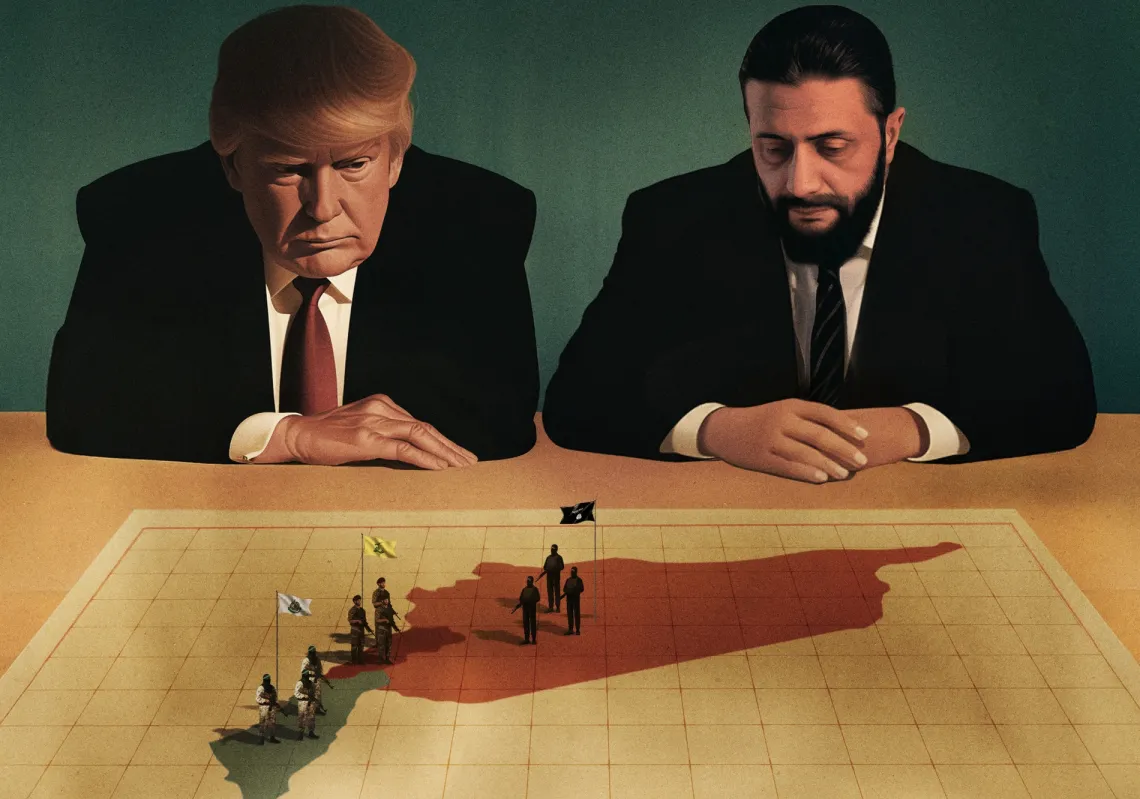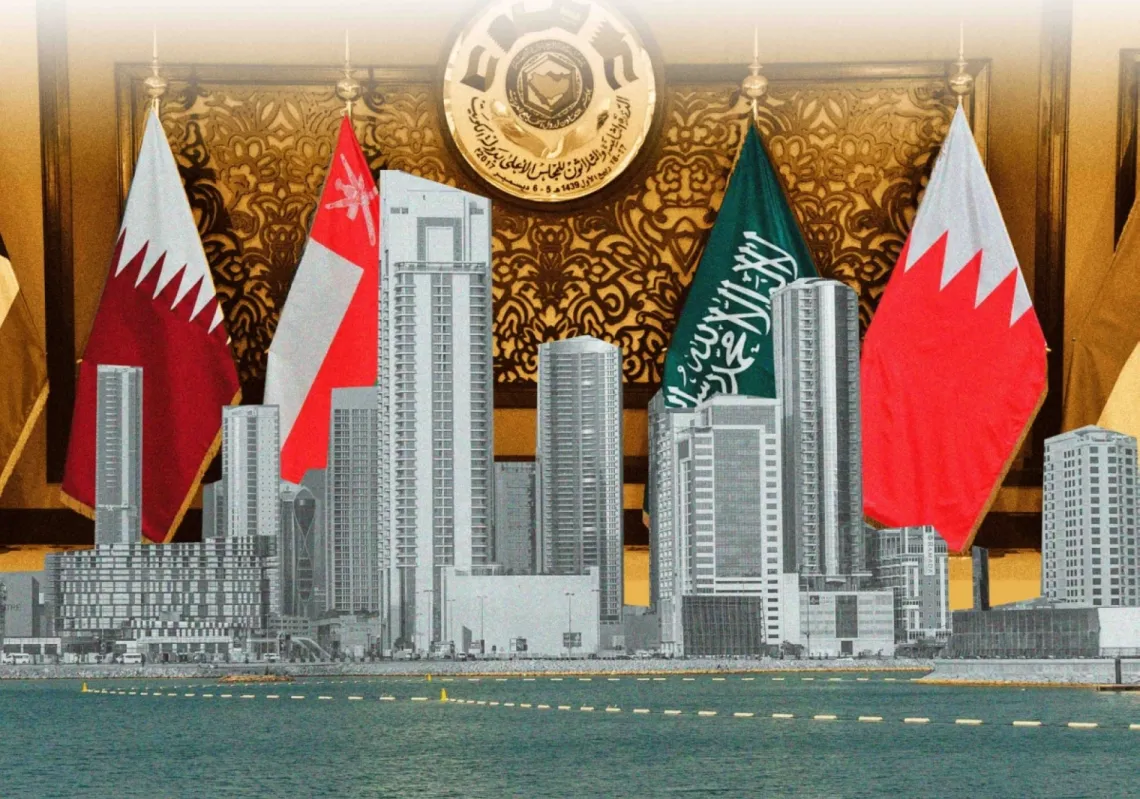 [/caption]
[/caption]
When Yasser Arafat assumed leadership of the Palestinian Liberation Organization (PLO) in 1969, the Palestinians were a people cast into ruin. Over two-thirds of the entire population of Palestine had been forcibly removed from their homeland during the War of 1948 and dispersed into refugee camps in neighboring countries. The physical remains of their villages and towns were steadily being removed while the memory of them faded. The backbone of Palestinian society had been shattered and seventy-eight percent of the land was now in the hands of the newly formed State of Israel.
Most importantly, the Palestinians had no voice. From the time of the British Mandate of Palestine onwards—which in practice began in 1917, although not officially until 1923—the Palestinians were almost never spoken with directly. Their fate lay in the hands of others, be they the leaders of the various Arab nations, the Hashemite family of the Hijaz, or the Zionists themselves. Even the PLO, which was established by the Arab League in 1964, was largely a conduit for Egyptian control of the various Palestinian liberation factions that had formed in the aftermath of the war.
[inset_left]Arafat was a man obsessed by a single goal: the national independence of his people.[/inset_left]
The legacy of Yasser Arafat and his Fatah movement, which took control of the PLO shortly after the decisive defeat of the Arabs to Israel in 1967, was the return of Palestinian agency over their own affairs. This culminated in 1974, when under his leadership the PLO was recognized by the United Nations as “the sole, legitimate representative of the Palestinian people,” a singular achievement.
“Yasser Arafat revived the Palestinian cause and changed it from an issue of refugees to a cause of people struggling to be free,” explains Dr. Ahmad Tibi, a Palestinian member of the Israeli Knesset who was an advisor to Arafat from 1993 to 1999. “This is the most important thing that Arafat succeeded in. He brought the Palestinian narrative and the Palestinian suffering to every place in the world.”
Yasser Arafat represents the greatest of contradictions for Palestinians. On the one hand he is the supreme icon of the resistance and the national movement for liberation, embodying Palestinian political consciousness. He is also the father figure that brought all his Palestinian sons and daughters under one roof, and could keep them there.
On the other hand is the legacy of corruption, repression, and unaccountability that Arafat left behind, particularly after initiating the Oslo peace process. His mercurial personality and the desire to be at the center of all things stunted the formation of the state institutions that he helped to create.
Writing in 1995, Edward Said, the leading Palestinian scholar of his time and a trenchant critic of Arafat wrote, “Yasser Arafat and his Authority use censorship not just to silence and threaten opponents of his policy, but also to hide his past mistakes from discussion and accountability. He accepted an agreement with Israel that said nothing about Palestinian self-determination on the one hand, and tacitly accepted occupation and the settlements on the other.”
Dr. Hanan Ashrawi, a leading Palestinian intellectual and member of the PLO Executive Committee sees Arafat’s legacy in not so simple terms. “Abu Ammar’s [Arafat’s nom de guerre] legacy is very complex. First of all, politically he is the one who changed course in the sense that he transformed the whole Palestinian national movement from revolution to peace making and reconciliation. Without him public opinion would not have moved in that direction. Second, he represented a symbol to the Palestinian people, always. The national symbol, the father of the nation, a larger than life figure, and so on. And he also represents an era in which the one-man-show was important and significant, in which the charismatic leader was the reference for everybody.”
The Leader and the Legend
As leader of the PLO, Yasser Arafat’s responsibilities were beyond measure and he was constantly maneuvering between rival organizations, the meddling of Arab governments in Palestinian affairs, a populace fractured along hostile geographic lines, and running a clandestine organization that was always in the precarious situation of operating in host countries. Moreover, the PLO was considered for a long time as a terrorist organization by much of the West and the lives of its leadership were constantly being targeted by Israel’s military and intelligence organization, the Mossad. Indeed, Arafat survived several attempts on his life, including a bombing attack on his headquarters in Tunis that left 73 dead and a plane crash in the Libyan desert of which he was the only survivor. Arafat’s intuition for survival became the source of legend.
“He was really the master of manipulation and control in the sense that he had to balance so many things simultaneously,” says Ashrawi, who knew him from her time as a student in 1969 until his death in 2004. “I don’t underestimate the tremendous challenges. So, even though he was not perfect, and he made mistakes, he remained a very significant force for change.”
 For those closest to him, Arafat was a man obsessed by a single goal: the national independence of his people. He worked endlessly in this pursuit and had no personal life to speak of, not even getting married until 1990 at the age of sixty-one.
For those closest to him, Arafat was a man obsessed by a single goal: the national independence of his people. He worked endlessly in this pursuit and had no personal life to speak of, not even getting married until 1990 at the age of sixty-one.
“He was a man of one problem, of one issue, of one case,” says Ahmad Abdel-Rahman, a longtime Fatah member and companion of Arafat, who described their relationship as “magnetic.” “He had an obsession with his role. You cannot imagine a man like him. Sometimes we called him mad.”
Arafat was unlike other leaders of his time in many ways. He was known equally for his accessibility as well as his charisma. His door was always open to his people and it was well known that one could visit him with him ease, day and night.
“He didn’t have any of the trappings of power that the Arab leaders and others wanted: the entourage and the ostentatious display of wealth and privilege and palaces,” explains Ashrawi. “He was living modestly and every time we went to have a meal with him or something he would have 20 or 30 people there, anyone who was around had to come eat. It was a very sort of personal relationship in that sense.”
The PLO in Decline
In 1982, an Israeli invasion into Lebanon drove Yasser Arafat and the PLO from their Beirut stronghold to far-off Tunis. For the first time, the PLO was no longer on the border of their homeland, and their fortunes suffered immensely. Arafat tried to return to the northern Lebanese city of Tripoli in 1983 but was driven out once again by a Syrian-sponsored split within Fatah.
“The Syrians were aiming all the time to undermine the PLO position and encourage other Palestinian groups… to declare that they were not part of the PLO,” says Dr. Saad Nimr, professor of Political Science at Birzeit University in the West Bank. “They were trying to convince them to form a new PLO.”
A story of Arafat from this period displays his savvy as a tactician and political survivor. After leaving Tripoli on a French ship bound to Yemen—a “political freezer” in the words of Arafat—he jumped ship in Egypt while passing through the Suez Canal. At the time, Egypt was being boycotted diplomatically by the entire Arab World for their decision to break with the rejectionist line and make peace with Israel in 1979. Without consulting anyone, Arafat met with Egyptian officials, causing uproar throughout the region.
Explaining his decision to a close PLO member, Arafat said he had to rearrange the table and chairs by flipping them all over. At that time, Egypt no longer had a seat at the table, so by breaking the diplomatic isolation he brought Egypt back to the table and gained himself a useful ally in the process.
Nonetheless, It was a period of rapid isolation that reached its peak in 1987, when for the first time the Palestinian question, which had always been at the top of the pan-Arab agenda, was not even brought up for discussion at the Arab Summit held in Amman. Isolated and running out of cash, the PLO leadership began to seriously consider the course that some of its members had raised beginning in the mid-1970s: to come to an agreement with Israel over partitioning the land into two states. Yet at the time Israel was unwilling to even acknowledge the PLO.
The Intifada
The opportunity, however, would soon present itself in unexpected fashion. In December 1987, the occupied Palestinian territories erupted into a full-scale revolt that came to be known as the first Palestinian intifada. Although Arafat was wary of Palestinian resistance manifesting outside his direct control, the intifada placed the Palestine question back on the map, and the leader of the PLO returned to prominence.
Arafat used the pressure building on the international community to resolve the conflict as an opportunity to change the fortunes of the PLO by altering the direction of the entire Palestinian national movement. At the Arab League Summit in Algiers in 1988, Arafat declared the establishment of the State of Palestine, and in effect, recognized Israel and the two-state solution. He was criticized heavily at the time, including by those who felt he was co-opting the momentum from the first intifada for his own aims.
Over the next few years, Arafat would do what was necessary to get himself to the negotiation table with Israel, from renouncing terrorism to political engineering within the PLO in order to achieve the national mandate to carryout a two-state compromise. It was something that no one other than Arafat was capable of doing.
By the time Yasser Arafat signed the Oslo Accords in 1993 the PLO was in a position of severe debilitation. Its funds, mainly acquired from the Arab states, had dried up, and strategic decisions like Arafat’s siding with Saddam Hussein in the first Gulf War, had hurt his political relationship with the United States and other Arab nations like Saudi Arabia and Kuwait. This weakness would further hurt the Palestinians at the negotiating table as the severe power imbalance between the parties manifested.
The PLO returns
When the PLO ‘returned’ to the West Bank and Gaza Strip as a result of the Oslo Accords, it was for many of them the first time they had stepped foot on the soil they were fighting for since 1948 or ’67. It was not surprising then—albeit a bit ironic—that none of them had ever seen an Israeli settlement in person, or the way they strategically hindered the emergence of what the PLO thought would be their new state.
The ignorance to these facts on the ground, the lack of research, organization and planning had direct consequences on the outcome of negotiations between high-ranking members of the PLO and their Israeli counterparts. The outcome of their dismal performance at the negotiation table were a series of agreements that left the Palestinian community chopped up and compartmentalized while ensuring that the type of intifada that had forced international recognition of Palestinian self determination in the first place, would never happen again.
Azmi Bishara, a well-known former Palestinian member of the Israeli Knesset, speaking in a documentary interview in 1998 said: “I don’t know why people analyze it as if Oslo was supposed to provide the answer to the crisis of the [Palestinian] national movement. It was supposed to provide the answer to the crisis of the PLO. What is being built here—in the realities that we face—is not a two-state solution, it is a demographic separation without sovereignty. Now demographic separation without sovereignty has one name in history, it is called apartheid. It has no other name. You are separating two groups, one with sovereignty and the other not. This is apartheid, this is not two states.”
Compounding this was the autocratic governing style of Yasser Arafat that left a terrible legacy of corruption, repression and unaccountability.
“He didn’t undergo a transformation smoothly from a revolutionary leader into a statesman. It was very difficult for him, particularly to deal with institutions and laws and accountability,” says Ashrawi. “In many ways he undermined the institutions or didn’t always work within the institutions and the system.”
Although not necessarily corrupt himself, Arafat allowed others around him to be corrupt. When Ashrawi says she posed the question to Arafat as to why he didn’t hold them accountable, he stated plainly, that it was out of loyalty to those who had stood behind him when he needed them.
Maybe the most devastating of all, however, was the marginalization of the Palestinian Liberation Organization after the Oslo Process began and the strengthening of the Palestinian National Authority at its expense. Theories abound as to why Arafat might have allowed this to happen.
“Politically it was not wise to marginalize the PLO... because the PLO has to be kept as a body just to explore the possibilities of success, to test the intentions of the Israelis, and there is a lot to be tested,” says Dr. Mamdouh Al-Aker, the former head of the Palestine Commission on Human Rights, set up by Arafat in the early days of Oslo.
“Besides that, by marginalizing the PLO—whether intentionally or unintentionally—all Palestinians in the diaspora were marginalized and kept outside the decision-making process,” he adds.
[caption id="attachment_55230199" align="aligncenter" width="660" caption="Arafat at his head-quarters in Beirut (circa 1980) to his left sits Hani Al-Hassan, and to his right, Shaffiq Al-Hout"]
 [/caption]
[/caption]
End of the Peace Process
By 1999, the year that the interim-Oslo Process was supposed to have ended with final-status negotiations, the reality on the ground had deteriorated tremendously. Average Palestinians felt more isolated and disenfranchised than ever before.
In 2000, US President Bill Clinton and his people were pushing Arafat to attend a hastily scheduled conference for negotiations at Camp David. But secret pre-negotiations between the three sides had yielded little and illustrated to Arafat that the gaps between them were very wide on the final status issues. Arafat was reluctant to attend.
In the end, a promise from Clinton that Arafat would not be blamed for a potential failure of the talks to yield results persuaded the Palestinian leader to go to Camp David. According to sources close to Arafat and the negotiations, Arafat was tense and afraid to engage out of a fear that Clinton and Barak would gang-up on him and force him into an unfair agreement. Indeed, Arafat was not prepared to sign an agreement at Camp David that did not meet full Palestinian expectations and without the support of the Arab World.
After two grueling weeks in July, the Camp David negotiations concluded without an agreement, Clinton reneged on his promise, and Arafat was summarily blamed by both the Americans and the Israelis. As Clinton’s term in office was coming to an end, Arafat began to believe that the next president might be more favorable to his cause.
By 28 September of that year, popular frustration with the failure of the peace process once again erupted into mass protest after Ariel Sharon, the notorious former military general and leader of the right wing-Likud party, sparked a confrontation at the Haram Al-Sharif in Jerusalem. The first few days of unarmed Palestinian demonstrations were met with brutal repression by Israeli police forces that resulted in several deaths and quickly spiraled out of control.
This Second Intifada was markedly different from the first in terms of the use of violence by Palestinians—it was propelled by armed factions instead of a mass popular movement. Arafat’s role in this shift has never been clear despite being contested vigorously. According to a source close to Arafat, the Palestinian leader did not initiate the violence, but once it started he did not try to stop, either. Indeed, Arafat felt he could use the violence as leverage at the negotiation table under the misguided assumption that the Israelis would bend in the face of a high death toll. On the contrary, after being elected prime minister in 2001, Ariel Sharon and other Israeli hawks used the violence as a pretext to destroy the Palestinian Authority and its leader.
By 2002, Arafat’s compound in Ramallah, Al-Muqa’ta, was under siege by the Israeli military and surrounded by tanks, after a massive ground offensive led to the reoccupation of Palestinian cities. For two years he remained a prisoner until a sudden illness caused him to be evacuated to a hospital in Paris, France for treatment. On November 11, 2004 Yasser Arafat passed away at the age of seventy-five.
The legacy of Arafat
Nearly eight years after his death, the Oslo Process that Arafat bequeathed to his people has stagnated and left the Palestinians more trapped and divided than ever before. The West Bank and Gaza Strip are not only geographically disconnected but suffer from an internecine political division between Fatah and Hamas, the Islamic resistance movement that Arafat had, at differing times, coddled and crushed.
Jewish settlements in the West Bank have grown exponentially and the possibility for a two-state compromise is widely perceived as all but impossible. Palestinian society is now on the precipice of a tremendous challenge: to once again find a means forward for national liberation and the fulfillment of Palestinian rights.
However, the vehicle for achieving national consensus, the PLO, is barely functioning and its aging leadership is becoming increasingly disconnected from its people. Moreover, as the center of political life shifted to the occupied territories after Oslo, Palestinians worldwide have been cutoff completely from participation in the decision-making process. Today, the PLO is need of serious reinvigoration and reform. Although many of these developments are beginning to manifest, divisions and power struggles within the Palestinian body-politic present a significant obstacle to achieving unity and progress.
Such divisions have plagued the Palestinian people from the beginning of their conflict with the Israelis, yet for decades they had a leader in Arafat that was capable of bringing disparate factions together, however tenuously. No other leader today shares the esteem of Arafat, nor his authority, including his successor Mahmoud Abbas, who continues to be much more of a politician than a populist, capable of uniting his people under a common agenda.
Moreover, Palestinians have not fully transitioned out of the shadow of one-man rule and the many complications and failures involved in having the fate of a people tied to the personality of a single leader. Today’s reality is in many ways the reflection of the decision-making of Arafat. Although he secured the right for his people to make their own decisions, he did not always make the right ones himself. The legacy of Yasser Arafat will continue to reflect this fateful dynamic and the deep complexities of the Palestinian struggle which he embodied.









